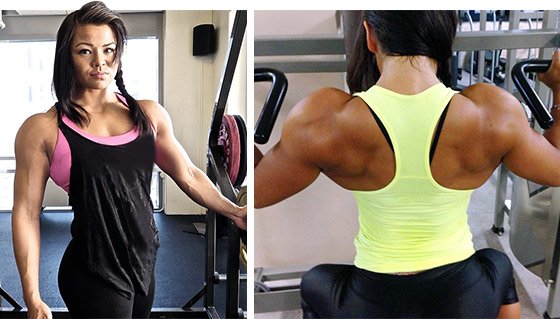I think shoulders are, aesthetically speaking, the most appealing muscle group on the human body. Strong words, I know, but well-defined shoulders have the power to make a good physique look great. They're like mountains on the horizon of a beautiful landscape—they complete the entire picture.
My five-exercise shoulder workout hits all three of your deltoid heads and doesn't waste time with unnecessary exercises. Instead of jumping around between an endless string of movement variations, I concentrate on these few gems because I can really achieve a strong mind-muscle connection, go to failure, and get the most bang for my buck.
When I train shoulders, I make sure I train each part of the shoulders thoroughly. Front deltoids, side delts, and rear delts are equally important to balanced shoulders. After hitting all three heads with a heavy compound lift, this workout activates and builds one deltoid head at a time.
Check out my five shoulder-building tips, and then try out the shoulder workout below!
SOPHIE'S 5 SHOULDER TIPS
1. Most bodybuilders train their front deltoids more than their rear or side delts. When you perform the ever-popular bench or other horizontal pressing movements, your front deltoids activate to complete the move. It's important to train your rear delts just as much as your front delts to prevent the shoulder cap from rotating forward—which can lead to rotator cuff and AC-joint injuries—and also to build good all-around shoulder symmetry.
2. I usually do high reps when I'm training my shoulders. If I go too heavy, I start cheating and don't get the same burn and connection with my shoulders. I like to include a lot of dropsets just to get that extra burn. To perform a dropset, start heavy, then drop the weight once you hit failure on each set.
3. My shoulders almost never get sore. In my opinion you can train shoulders 2-3 times every week if you need to prioritize them.
4. Add internal and external rotations to your preferred shoulder warm-up. They work your rotator cuff and various stabilizer muscles, which can help keep your shoulders healthy and injury-free for the long haul.
5. A good way to blow up your shoulder growth is to add a little bit of shoulder work into your chest and back workout as well. Train front deltoids with chest, and rear delts with back. Then, when you do the shoulder session outlined below you will definitely begin to notice a difference.
Seated Shoulder Press
The seated shoulder press activates all three of the shoulder heads, but the main focus is typically on the front deltoid. If you're sitting on an adjustable bench, set the back support at a 10-degree angle, or find a position where you feel you can develop as much power as possible. Lower your scapula, pull your shoulders back, and create just a little arch in your lower back.
Keep your forearms vertical during the whole lift, and position your elbows just a little in front of your body. Start the movement with the dumbbells at shoulder height, and press them toward the ceiling. Just before the elbows are fully extended, slowly lower the weights for 2-3 seconds in the negative phase. When you feel the stretch in the deltoid—and reach the starting position—repeat the movement.
Lateral Raises
To isolate the lateral deltoid as much as possible, keep your elbows slightly bent, lower your scapula, and keep your grip pronated—pinkies pointing outward. Also, try to keep your body stationary without swinging the dumbbells too much; don't let other muscles help out.
I always start my standing lateral raise dropsets heavy, and in my first set I'm not as strict. With each dropset, lower the weight and use stricter form. For the last dropset, sit down and do 10-15 reps super-strict with a light weight.

Superset: Seated Shrug And Reverse Dumbbell Fly
I usually train the upper part of my trapezius together with my shoulders. Start this superset with shrugs to fire up the traps. In a squeezing motion, move the shoulders upward toward your ears. In the negative phase, hold for 2-3 seconds. Shrugs come first in this superset because I feel like I can focus more on my rear delts once the traps are tired.
Without rest, move to the reverse fly, to isolate the rear delts. Use dumbbells, cables, or both. The rear delts are small muscles, so you won't need much weight to work them in isolation. Lean forward with bent knees and try to put your weight on your lower body, so you can focus entirely on the movement in the shoulders.
With slightly bent elbows, lift the dumbbells out to your sides until they are aligned with the upper body. Stop for a second and squeeze the rear delt before you lower the weights. Stop several inches before the dumbbells bang into each other, avoiding any swing, and try to get a smooth, controlled movement.
Machine Exercise of Choice
I always end my shoulder sessions with a machine exercise. Pick a machine that puts the main focus on the weak part of your shoulders. For example, if you rear delts are lacking, try a reverse pec deck fly or a cable exercise. Note that you can move the cable levels up or down to target a weaker area. Since you have 5 sets on this station, you can knock out multiple exercises or exercise variations.
